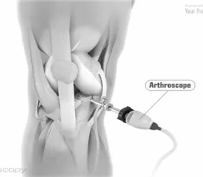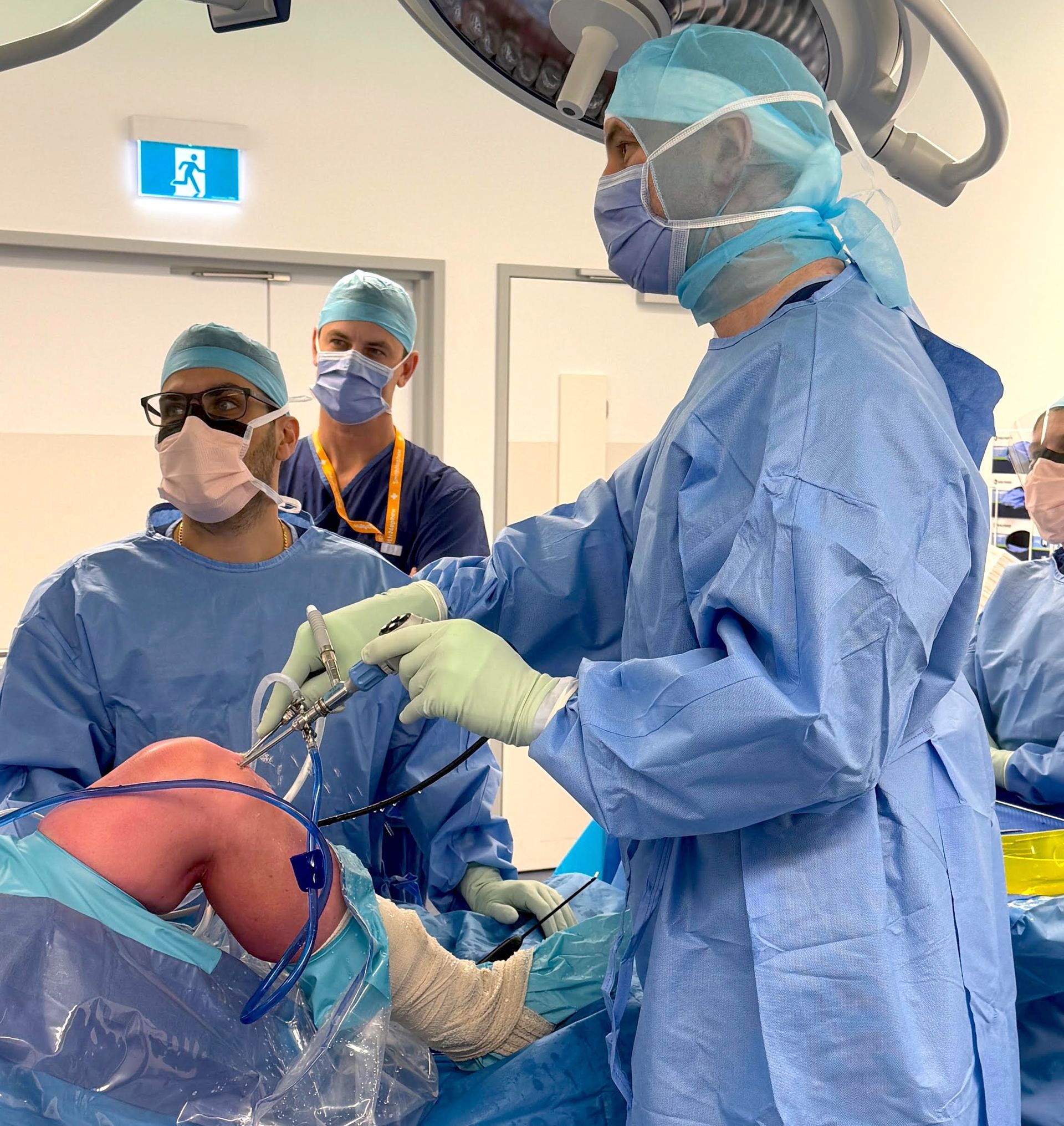Knee Arthroscopy
What is Knee Arthroscopy?
Knee injuries are common among athletes and the elderly. While some cases may require surgery, others may be treated through non-invasive measures. Knee arthroscopy is a minimally invasive procedure that can effectively treat various knee conditions.
Knee arthroscopy is a surgical procedure involving a tiny camera called an arthroscope to examine and treat the knee joint.
The arthroscope allows direct visualisation of all parts of the knee and allows surgical procedures to be performed by minimally invasive ‘keyhole’ surgery.
Who is Suitable for Knee Arthroscopy?
Knee arthroscopy suits individuals with knee problems that do not respond to non-surgical treatments. These include
- Meniscus tears: Tears in the rubbery cartilage that cushions the knee joint can cause pain, swelling, and difficulty moving the knee.
- ACL or PCL injuries: A torn anterior cruciate ligament (ACL) can cause knee instability, pain, and swelling.
- Loose bodies: Small pieces of bone or cartilage that float in the knee joint can cause pain, locking, and catching.
- Cartilage injuries: Damage to the cartilage can be treated in several ways, some arthroscopically and some open procedures.
Preparations Before Knee Arthroscopy
Before a knee arthroscopy, the surgeon will conduct a physical exam and review your medical history to ensure you are a good candidate for the surgery. You may need to stop taking certain medications or supplements in the days leading up to the procedure to reduce the risk of bleeding. You must also arrange for someone to drive you home after the surgery.
Knee Arthroscopy Procedure
The knee arthroscopy procedure typically takes 30 minutes to an hour. Here are the steps involved:
- Anaesthesia: The surgeon will administer either general anaesthesia or regional anaesthesia (such as a spinal or epidural block) to numb the knee and prevent pain during the surgery.
- Incision: The surgeon will make small incisions (about ¼ inch) around the knee joint to insert the arthroscope and other surgical instruments.
- Arthroscopy: The surgeon will insert the arthroscope, a small camera, through one of the incisions to view the inside of the knee joint. The images from the arthroscope are displayed on a monitor, allowing the surgeon to see the joint and guide the surgical instruments.
- Repair or Removal: Depending on the condition of the knee joint, the surgeon may use surgical instruments to repair or remove damaged tissue, such as a torn meniscus or damaged cartilage.
- Closure: Once the procedure is complete, the surgeon will remove the arthroscope and other instruments and close the incisions with stitches or surgical tape.
After Knee Arthroscopy Procedure
After the knee arthroscopy, you will be taken to a recovery area to rest and monitor your vital signs. You will likely experience some pain, swelling, and stiffness in the knee joint, which can be managed with pain medications and ice.
You may also need crutches or a brace to protect the knee joint as it heals. Your doctor will provide instructions on caring for your knee and when you can return to normal activities.
Post-Op Instructions
What to Expect
The recovery speed after arthroscopy varies and depends on your particular condition and the type of surgery. Every case is different; hence, only general comments are made here.
The operation's findings will be discussed in detail at the first follow-up visit rather than immediately after the operation, as you may still be recovering after the anaesthetic.
Pain
You should be pain-free for the first 4-8 hours after the operation. Some discomfort can be expected in the first 24 hours. Ensure you have painkillers (or a prescription for such) to take home on discharge. If you experience pain, take painkillers as prescribed; place an ice pack or frozen peas on the knee (over a layer of the towel) for 10-15 minutes every half hour. Some swelling is also expected.
Walking / Exercises
You may put full pressure on the leg and walk as is comfortable unless told otherwise. Crutches or a walking stick may be required for a few days.
Carry out straight leg raising exercises: clench the quads, lift the leg (with the knee straight) six inches off the bed, hold it there for three seconds, and lower back into bed. Repeat 20 times or more every waking hour.
Depending on your condition and the type of surgery, you may or may not need physiotherapy.
Driving
Due to the anaesthetic effect, you must not drive or operate machinery for the first 24 hours. If your left knee is involved and you drive an automatic car, you may drive when able. If your right knee is involved, you may return to driving if you can depress the brake and control the vehicle should an emergency arise.
Dressings
Remove the outer bandage 24 hours after the operation. Underneath the bandages will be stick-on dressings. Try to keep these dressings intact and dry. Remove these after five days, exposing the small stitches or covering them with an ordinary Band-Aid.
After five days, you may let the knee get wet. If water does get under the dressing, remove it and replace it with an ordinary Bandage.
Warning Signs
- Severe pain after the first 24 hours not relieved by painkillers.
- Redness of the wound and feeling feverish.
- Pain in the calf, chest pain or shortness of breath.
If you have any of the above symptoms, immediately contact your doctor or the hospital.
Knee Arthroscopy Risks
Like any surgical procedure, knee arthroscopy carries some risks. These include
- Infection at the incision site or in the knee joint.
- Excessive bleeding can occur during the surgery or the days following the procedure.
- Blood clots can form in the leg veins, which can be life-threatening if they travel to the lungs.
- Nerves around the knee joint can be damaged during the surgery, resulting in numbness or weakness in the leg.
- There is a risk of anaesthesia-related complications, such as allergic reactions or breathing problems.
- In patients who already have early arthritic changes, there is some evidence to say that arthroscopic "cleaning up"surgery can make the arthritis worse.






